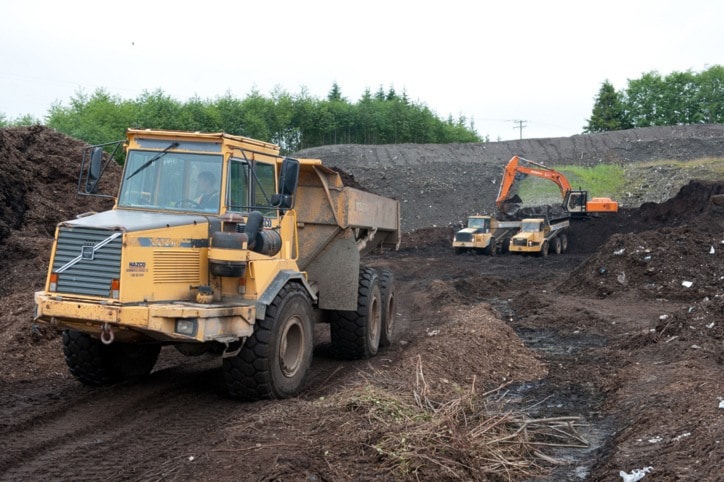SEVEN MILE — The greening of Seven Mile Landfill is under way — in more than one way.
A large mound of contaminated soils recently deposited here has been placed over the completed Phase 1 section of landfill, and will be hydro-seeded to create a smooth, grassy slope over the North Island’s trash.
The final biocover should also serve to mitigate methane gas emissions from the facility.
“We have strong confidence the biocover will reduce the release of methane gas,” said Patrick Donaghy, operations manager for the Regional District of Mount Waddington.
Donaghy said the high organic content of the soil, which is contaminated primarily with traces of metals, provides microorganisms that ingest methane and convert it to carbon dioxide.
While both are greenhouse gases, methane is capable of trapping roughly 50 times more heat than an equivalent amount of CO2, according to the Intergovernmental Panel on Climate Change.
The Regional District has tested the level of methane emissions from various spots in the landfill for baseline data, and will do follow-up tests at those locations in the future to determine the degree of methane mitigation, Donaghy said.
Hazco delivered the soils from an industrial site in the Cowichan Valley to Seven Mile Landfill in March.
The company paid RDMW to dump the soil under a contract that included providing the on-site soil placement and hydro-seeding currently under way.
“We’re using one excavator, one bulldozer and three rock trucks,” Hazco manager Brian Fagan said.
“The dozer and one truck are Hazco’s; the rest are local contractors.”
The contaminated soils were combined with HOG fuel — composted waste wood — and biosolids from the wastewater treatment plant.
Leftover material was used to fill and create a roadway around the landfill’s lower containment ponds.
Hazco also removed 11 fish totes filled with various household hazardous waste, like paint, paint-thinner, oil, and many containers of unidentified liquids.
The RDMW, in turn, used a portion of the extra income to pay Hazco to move other material on the site, including the HOG fuel pile.
“We’re trying to make improvements to the landfill in a way that makes it more functional,” Donaghy said.
“One one hand, we’re using some of these soils to buttress the less stable surfaces, which are basically sand hills.
“But it’s aesthetic as well as reinforcing the structure.”
